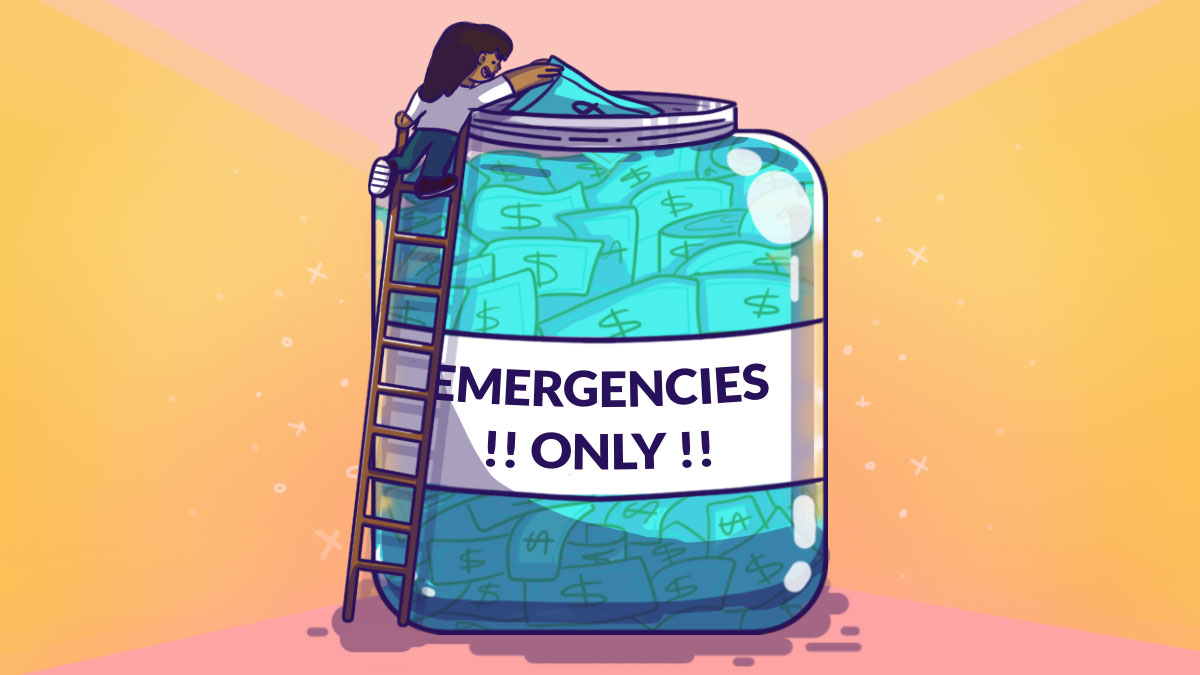Budgeting | Personal Finance | Article
How to Build an Emergency Fund
by The Simple Sum | 5 Nov 2020 | 5 mins read

If you were to lose your job tomorrow, would you have enough saved to survive till the next job rolls along?
Time is needed for a derailed life to get back on track when unexpected events occur. This is when an emergency fund saves the day, providing that breathing space. Here’s a quick overview of how to build an emergency fund.
What is an emergency fund primarily used for?
Emergency funds are reserved for significant life events that deny a steady source of income or forces one to cough up large, unexpected sums of money. Here are some typical examples:
- Retrenchment.
- Severe Illness. While medical insurance might cover some costs, but due to insurance co-payments, one might still have to fork out large sums of cash.
How much should go into an emergency fund?
A suitable range would be 3X to 6X of monthly cash needs. This is to ensure that one is still able to pay their bills and put food on the table – while one looks for a job.
How do I determine my monthly expenditure?
You need to identify how much you need to survive a month; find out how to do that here.
When should it be 3X? 6X?
There is a guideline that every $10,000 out of one’s annual income represents a month needed to be taken to find a job. So, someone with an annual salary of $60,000 might take up to 6 months to look for a new job.
The idea is that the higher one is in the employment food chain, there would be lesser similar positions available in the job market.
However, this is a very rough estimation. Someone who works as an admin staff might likely experience a higher re-employment rate, as the role cuts across industries, so it can vary from industry to industry.
So, several factors should be taken into consideration, such as evaluating one’s industry/sector and role. Personal employability plays a part too, such as work experience and skills currency.
But if you are unsure, a 6-month fund would be a safe bet.
Break down your emergency fund targets
Starting out, It’s probably mathematically impossible to save six months’ worth of expenditure immediately. Take things slow, breaking down your emergency fund goals will make things easier.
Here’s a suggested route for incremental saving:
- $500. You’ll be able to cover minor emergency costs, like sending your car to a workshop to fix a car dent, changing your tires and getting your spark plug changed.
- $1,000. This will be adequate if you’re trying to make ends meet and pay your bills in the event that you go over your budget.
- Three months’ worth of expenditure
- Six months’ worth of expenditure (if applicable)
Where can I store my emergency funds?
The keyword is ‘liquid’, meaning your funds will flow like water (highly accessible) when the fires of life occur. So they are usually placed in a regular savings account (with poor interest rates).
There are some areas where you can put that sum of money aside for it to grow, with caveats.
“Better”- interest savings accounts
You should shop around for accounts that give better interest rates and find one that suits your needs. For example, BIBD’s Easy Saver typically offers 0.40% interest on their account balances each year.
- Safe, highly liquid.Caveat #1: Usually these accounts need a minimum monthly balance if you want to continue using it. This means keeping your emergency funds within your everyday account. It takes discipline not to dip into it.Caveat #2: The banks can change the criteria for earning interest, usually at the end of each year.
Low Risk Bonds
Government bonds and investment-grade corporate bonds are typically low risk investments. For example, Bonds offered by Standard Chartered.
- Regular cash payouts every 6 or 12 months
- As safe as investments get, backed by the government
- It is a good vehicle for a first foray into basic investingCaveat: Payouts and redemptions will be handed out on a specific business day of the next month (according to the bank’s discretion). So do not keep 100% of your emergency funds in here.
In conclusion
It’s not just about money, an emergency fund buys us a sense of emotional security at the hardest points of our lives.
Having an emergency fund also prevents death-spiral situations, for example, getting into borrowing from a credit card, when it’s the worst time to get into debt. Or, a desperate job-hunter might accept the first offer, even though it might not be the best they can get. Lastly, if one is investing, having that safety net also prevents the horrible situation where one is forced to convert investments back to money, even if the investment might be – only momentarily – performing poorly.
It is also good to note, expenses might increase with age – perhaps one might have children – it would be wise to remember to pad-up the amount stashed away. The emergency fund sum is, after all, pegged to one’s monthly expenses.
As with everything else in life, it pays to be prepared. If you haven’t already, it’s time to start working on building that emergency fund.













